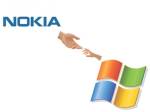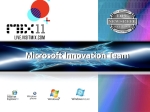 Sony Play Station announced they had a security breach in their online gaming platform. This is the second negative cloud story in a weeks time from the Amazon outage story. These two occurrences bring to the forefront the risks of failover and security as some of the largest barriers to cloud computing.
Sony Play Station announced they had a security breach in their online gaming platform. This is the second negative cloud story in a weeks time from the Amazon outage story. These two occurrences bring to the forefront the risks of failover and security as some of the largest barriers to cloud computing.
Much focus has been paid in the past year to the cloud offerings from Amazon, Microsoft and Google. Many new services and solutions have been launched by all vendors with their share of success stories and struggles. Less in the spot light has been the broad use of cloud architectures for year supporting the gaming platforms of XBOX, Play Station, and Wii plus the multitude of Massive Online Gaming infrastructure being supported by 3rd party gaming firms. The large scale of users that play and interact on these infrastructures is perhaps the leading edge of cloud computing refinement in terms of scale and performance. It is often overlooked due to the fact that the gaming is not considered as mission critical as perhaps a traditional enterprise system is thought of.
This perception is will be challenged in the near future for a variety of reasons. First of all, gaming itself is becoming big business in terms of membership, hours of screen time, and direct consumer channel. So it represents big money and is mission critical in its own right.
Several major trends in gaming put it on a collision course for merging with main stream business:
- In game advertising is providing significant revenue opportunities and reach to targeted audiences
- One to one Marketing and profiling is becoming a key asset in tracking player preferences and trends
- Loyalty programs are starting to blend point acquisition and redemption across gaming and commerce channels
- Gaming consoles are becoming a primary entertainment channel in the home, and thus a primary business channel to capitalize on
- Gaming platform vendors are opening up their platform to enterprise customers to create next generation applications available over these gaming channels. This will be an aggressive and competitive landscape to integrate these enterprise and entertainment offerings in the home
Clearly commerce, entertainment, marketing, advertising, and analytics are all converging. Cloud architectures will be a key component of delivering these solutions to consumers in their homes and across their world of personal devices. Corporations need to be engaged in cloud computing today to develop their capabilities and learnings in this environment to compete in the innovation space in the coming years.
www.tomorrowfromtoday.com
 I attend CES in Las Vegas in January 2011 and interacted with a wide number of vendors from great Asia. With over 140,000 in attendance it was an amazing show to experience cutting edge innovation and business development conversations. Now the opportunity to attend SINOCES is right around the corner.
I attend CES in Las Vegas in January 2011 and interacted with a wide number of vendors from great Asia. With over 140,000 in attendance it was an amazing show to experience cutting edge innovation and business development conversations. Now the opportunity to attend SINOCES is right around the corner.


